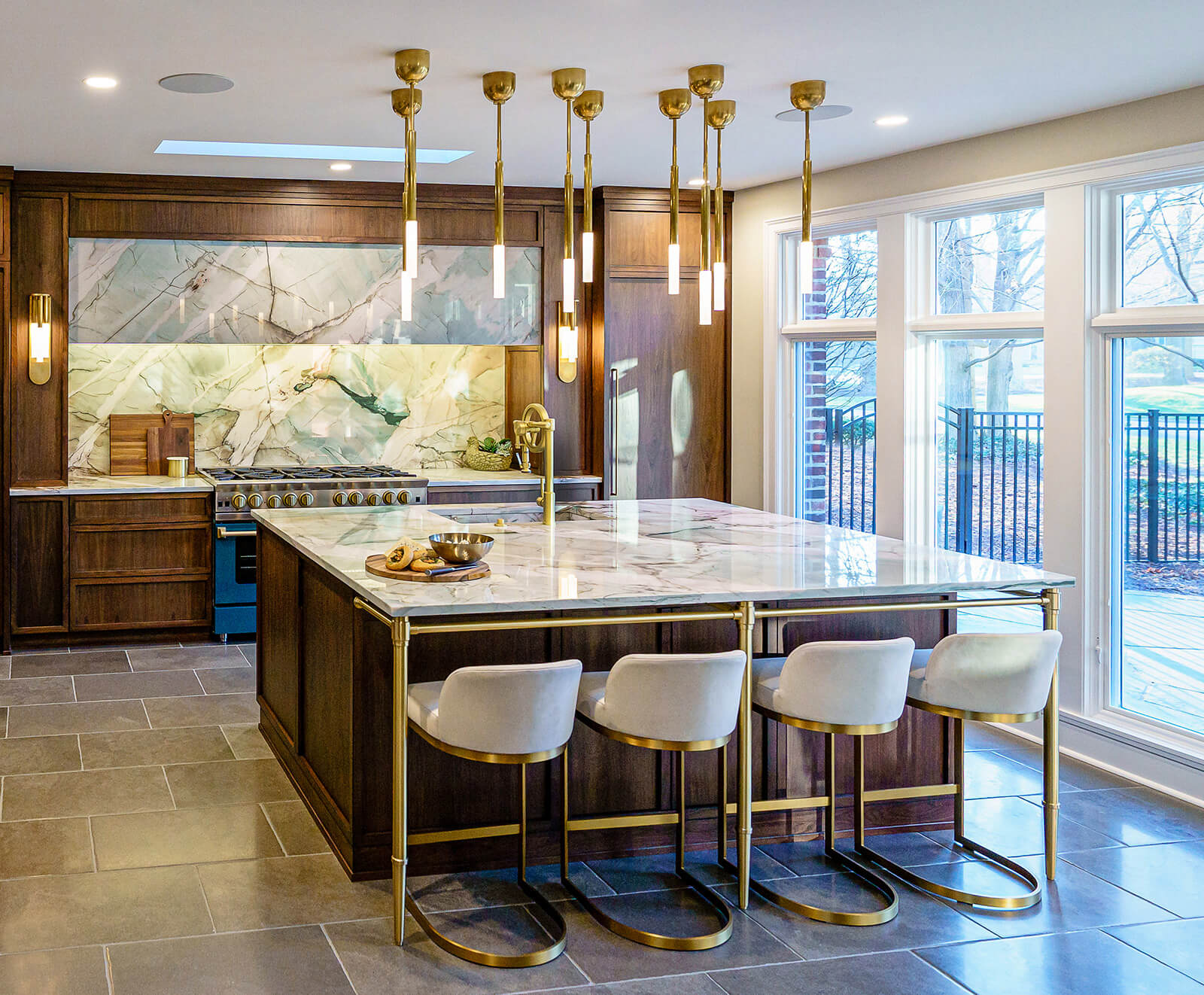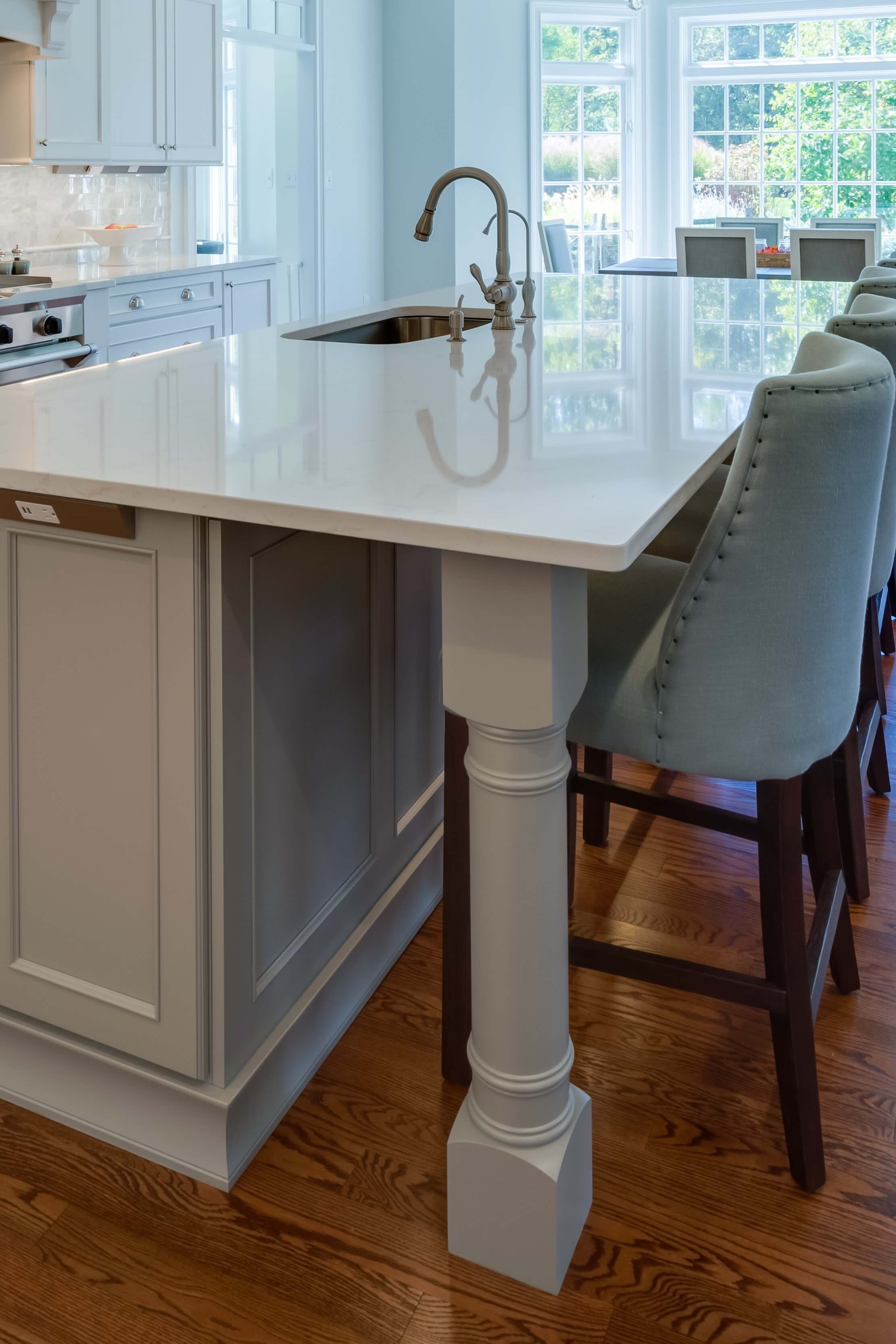Trick Factors To Consider for Discovering the Best Legs For Kitchen Island for Your Layout
When picking the suitable legs for your kitchen area island, several vital factors to consider enter into play that can considerably influence both capability and appearances. The option of elevation, material, and style must straighten with your general kitchen style to guarantee a harmonious appearance. Additionally, stability and upkeep demands are vital for long-lasting use and simplicity of care. Comprehending these factors can improve your kitchen's functionality and visual charm, yet the nuances of each factor to consider can frequently be forgotten. What implications might these selections carry your kitchen area's total atmosphere?
Determine Your Style Preference
When choosing the suitable legs for your cooking area island,Determining your style preference is important. The legs of your kitchen area island not just offer a practical objective yet additionally add dramatically to the total visual of the room. Therefore, identifying your design style-- be it modern, rustic, traditional, or industrial-- is important.
For a modern-day cooking area, take into consideration streamlined, minimalistic legs that match open areas and tidy lines. On the other hand, a rustic setup may benefit from even more durable, farmhouse-style legs made from recovered materials. Traditional cooking areas usually prefer turned or ornate legs, which can include a touch of sophistication and class. A commercial aesthetic might call for metal legs that emphasize a raw, incomplete appearance.
Furthermore, consider the elevation and proportion of the legs in relation to the island's surface. Eventually, your design choice will certainly affect not only the option of legs however additionally the total consistency of your kitchen's design.
Choose the Right Material
Choosing the best material for your kitchen area island legs is essential in making certain both resilience and aesthetic appeal. Various materials provide distinct advantages, and the choice frequently reflects your design preferences and functional requirements.
Timber is a preferred selection, giving heat and flexibility. It can be tarnished or repainted to match your kitchen area style, making it versatile to numerous designs, from rustic to modern. Wood might need routine maintenance to preserve its look and stability.

If you look for an unique touch, think about acrylic or glass products. They can create an illusion of area and agility in your kitchen, making them an exceptional selection for smaller areas - Legs For Kitchen Island. Nonetheless, these options may need mindful handling and upkeep to avoid scratches.
Inevitably, the product you choose ought to line up with your cooking area's total design, guaranteeing that the legs serve both attractive and functional purposes.
Consider Height and Proportions
When creating a kitchen area island, elevation and percentages play a critical role in ensuring functionality and comfort. The standard height for a kitchen area island commonly varies from 36 to 42 inches, aligning with conventional counter elevations or bar heights, respectively. This dimension is vital for harmonizing with bordering feceses and counter tops, allowing ease of use throughout dish preparation and social interactions.
Additionally, the island's percentages need to match the general kitchen format. A well-proportioned island must not overwhelm the space; instead, it needs to produce a balanced visual. Think about the ratio in between the island's size and length, guaranteeing it supplies sufficient surface area without crowding the cooking area. A basic guideline is to keep a width of 24 to 48 inches, helping with activity and availability.
Moreover, the height of the legs or base can affect the visual allure and functionality. Taller legs might lend an extra modern, ventilated feeling, while shorter ones can stimulate a conventional, based appearance. Eventually, carefully taking into consideration height and proportions will certainly result in a kitchen area island that is both visually attractive and functionally reliable, enhancing the general layout of the space.
Assess Security and Resilience
A kitchen area island's legs have to not only complement its height and percentages but additionally give adequate stability and longevity to support everyday activities. The legs are vital to the general capability of the island, as they birth the weight of the countertop and any kind of extra lots, such as devices or cooking tasks.
When examining security, it is crucial to think about the leg layout and product. For example, sturdy metal or solid wood legs usually offer superior strength compared to lighter materials like engineered wood or plastic. Additionally, a wider base can enhance stability, reducing the threat of tottering or tipping throughout usage.
Toughness is just as crucial; the legs must withstand deterioration from daily use. Consider finishes that shield versus scrapes, dents, and moisture, specifically in a look these up cooking area setting. Assess the quality of building and construction, such as fastenings and joints, which can significantly influence the legs' long-lasting performance.
Inevitably, investing in well-crafted legs that focus on security and resilience will certainly guarantee your kitchen island continues to be a trusted office for years ahead, improving your cooking experiences while preserving visual charm.
Consider Upkeep and Care
Upkeep and treatment are important considerations for making certain the longevity and performance of cooking area island legs. When selecting legs, it is necessary to assess the materials made use of, as various alternatives require varying levels of maintenance. Wood legs might require regular refinishing or securing to prevent wetness damages and scrapes, while metal legs may need normal brightening to maintain their luster and stop corrosion.
Furthermore, the surface used to the legs can affect maintenance needs. A high-gloss finish might be simpler to clean however can reveal scrapes and fingerprints much more easily than a matte coating. It is advisable to choose products and more finishes that complement your way of life; for instance, if you often organize celebrations, decide for durable materials that can endure deterioration.
Furthermore, think about the cleansing procedure associated with maintaining these legs. Smooth surface areas frequently require minimal effort, while intricate designs may accumulate dust and gunk, requiring more labor-intensive cleaning methods. Legs For Kitchen Island. Ultimately, considering the upkeep and treatment required for your chosen kitchen island legs will not just boost their visual charm but also guarantee their useful stability in time
Final Thought
In conclusion, selecting the optimum legs for a cooking area island demands mindful consideration of various aspects, consisting of layout style, material option, elevation, stability, and maintenance. Each component plays a crucial duty in making sure that the legs not only boost the aesthetic appeal of the cooking area but additionally supply the required assistance and longevity for daily usage. A knowledgeable decision will inevitably add to a useful and visually pleasing cooking area atmosphere.
The legs of your cooking area island not only offer a functional objective but additionally contribute dramatically to the general visual of the space.Upkeep and care are vital considerations for making sure the longevity and performance of cooking area island legs. Wooden legs may you can try these out call for periodic refinishing or securing to protect against wetness damages and scrapes, while metal legs might require regular brightening to keep their shine and stop corrosion.
Ultimately, factoring in the maintenance and care required for your picked kitchen island legs will certainly not only improve their visual allure but likewise guarantee their useful integrity over time.
